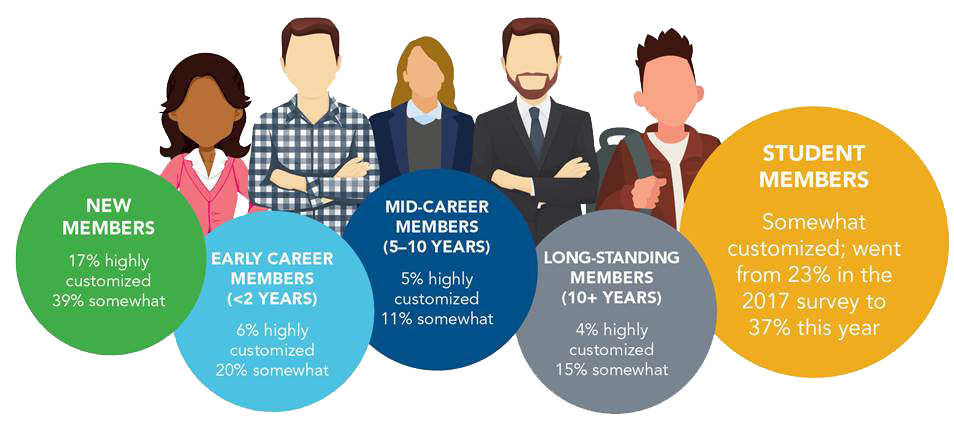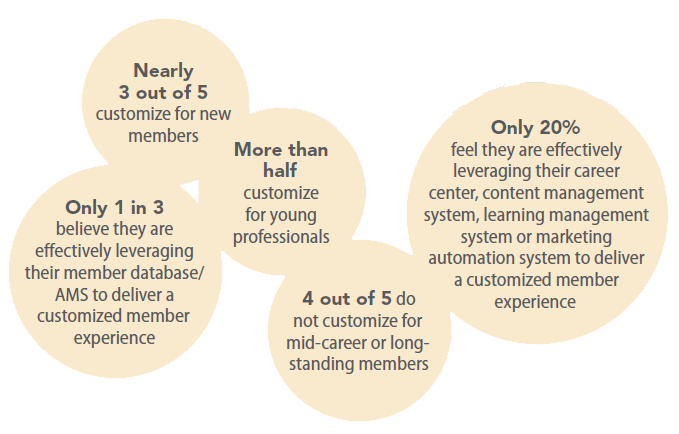Play Favorites with Your Members by Customizing Member Communication
Associations may say they don’t play favorites with members, but results from our 2018 Association Communications Benchmarking Study prove otherwise.
Why customize member communication for certain groups over others? For some member subgroups, the need to provide more or different information is clear. New members, for example, need guidance about how to become involved in your association and how things are done. Fifty-six percent of respondents to our study reported customizing new member communication. Information such as board of director profiles or how to log into the online member portal might be old news to veteran members, but interesting (and necessary) info to newbies. It’s also important to feed information about the norms of your association to new members, so they don’t feel awkward.
Your association might want to improve its retention of other subgroups, so making a point to reach out to these members could warrant extra member communication efforts. For example, many associations convene monthly or quarterly roundtables for professionals who have achieved a certain certification and want to continue sharpening their skills with an equally knowledgeable cohort. Other associations focus on recruiting future members through communication that speaks to students at local universities and high schools. In our study, communication customization for students increased by 14 percent compared to 2017, for a total of 51 percent of associations who said they customize communication for students.

While new members and students tend to receive a lot of attention, member communication customization for mid-career members and long-term members is not as common. Only 19 percent of associations reported customizing member communication for long-term members, while just 16 percent customize member communication for mid-career professionals. This is a huge missed opportunity to tap into their wisdom, knowledge, experience, connections and desire to leave a legacy.
How could associations customize member communication for these subgroups more? If there’s no obvious need for mid-career or long-term members, start with the source: Ask these members how your association can better serve them through your member communication program. Whether it’s through a survey or an informal conversation over the phone, find out if there is some information these professionals would like to receive. It could be that they’d like a digest just for their cohort or simply more attention given to the issues they face most frequently in their roles.
Consider how these groups like to receive information, too. The stereotypical image of a professional is someone with their hand never too far from their smartphone, but print remains a strong medium for reaching people when they want to better understand complex issues or when they want to save information for future reference.
On the flip side, electronic media is becoming more and more popular at events for its eco-friendliness and ability to travel well. Just 20 percent of associations report using their career center, content management system, educational platform or marketing automation system to their full potentials to customize each member’s user experience. Take a look at your tools to see how you could personalize member communications using what you already have. How will you know which channels your members want? Ask!

Customizing member communication takes more effort but the payoffs — happier new members, more student members, more engaged long-term members — will be worth your trouble. How you customize member communication can take several forms, but always start by asking members or potential members what they want from custom communication and how they want to receive it. The next steps will fall into place.

